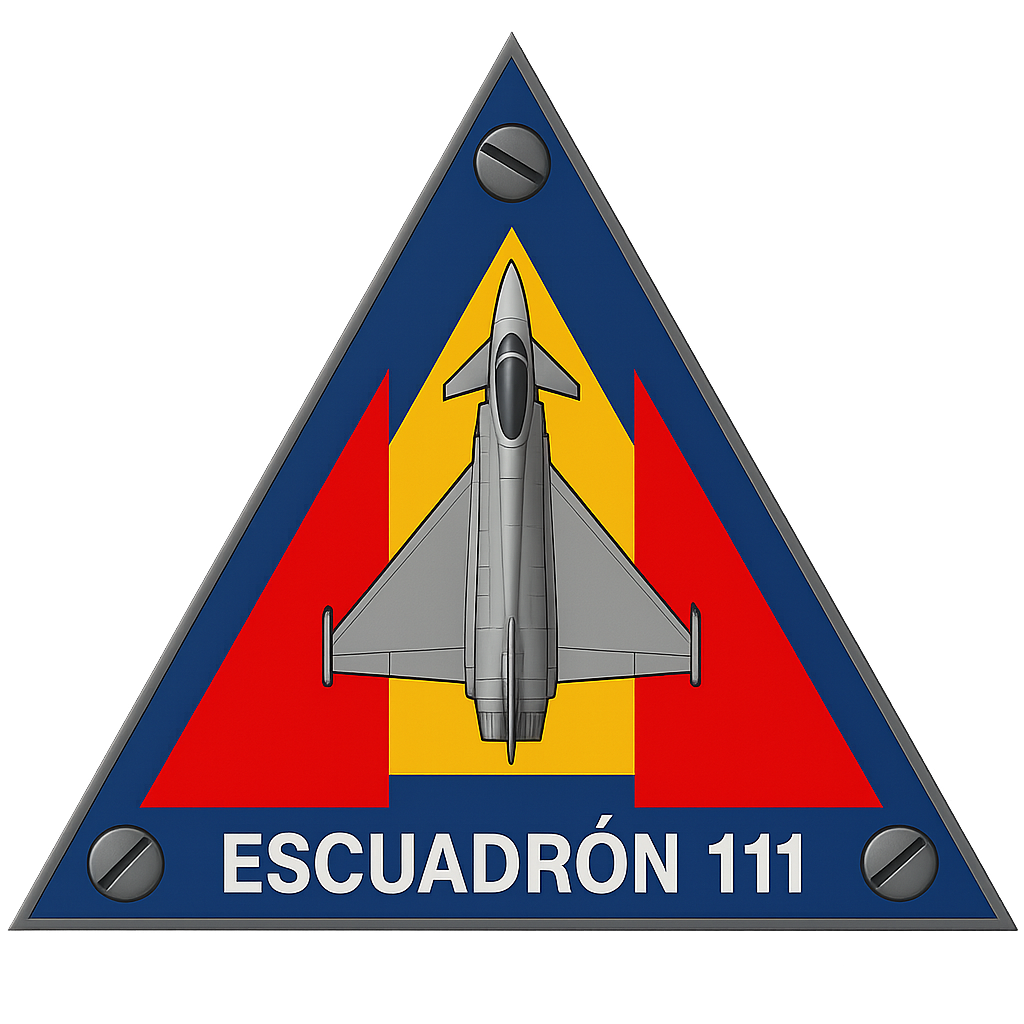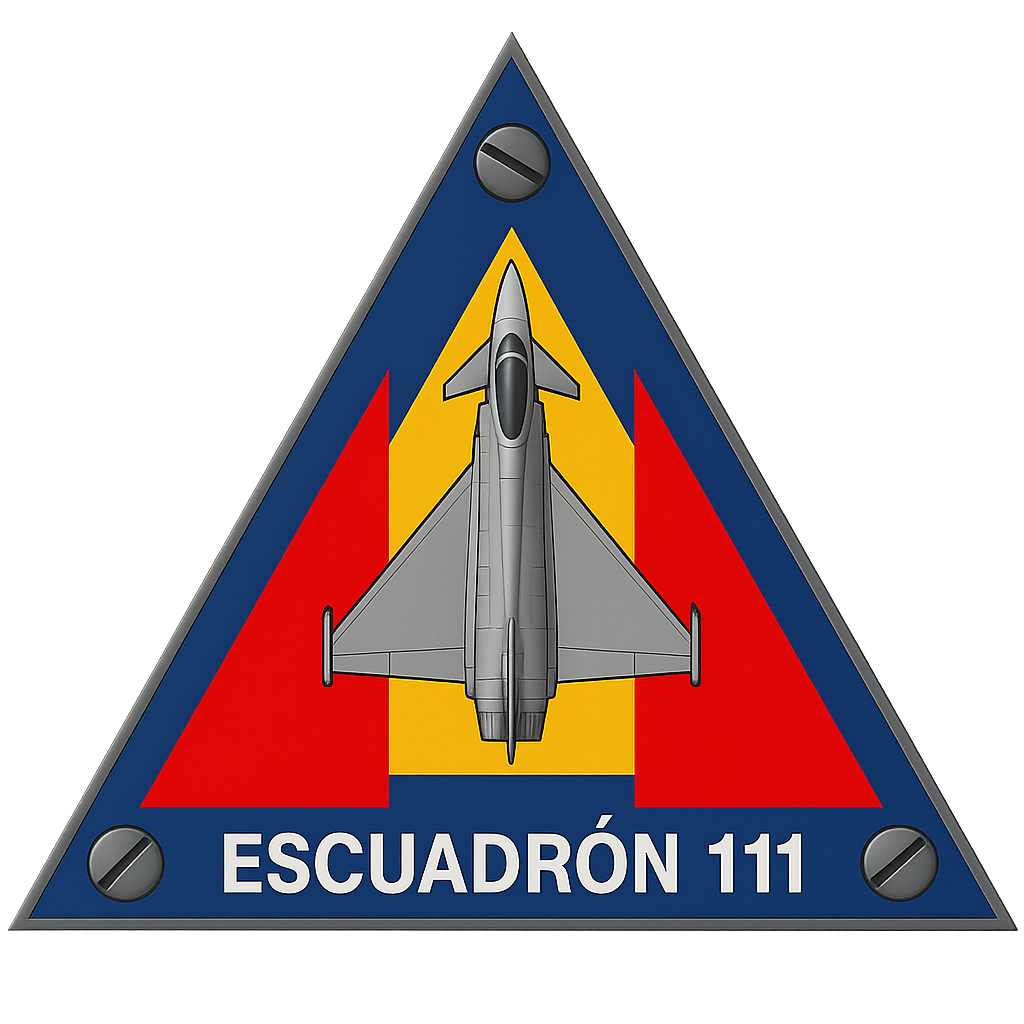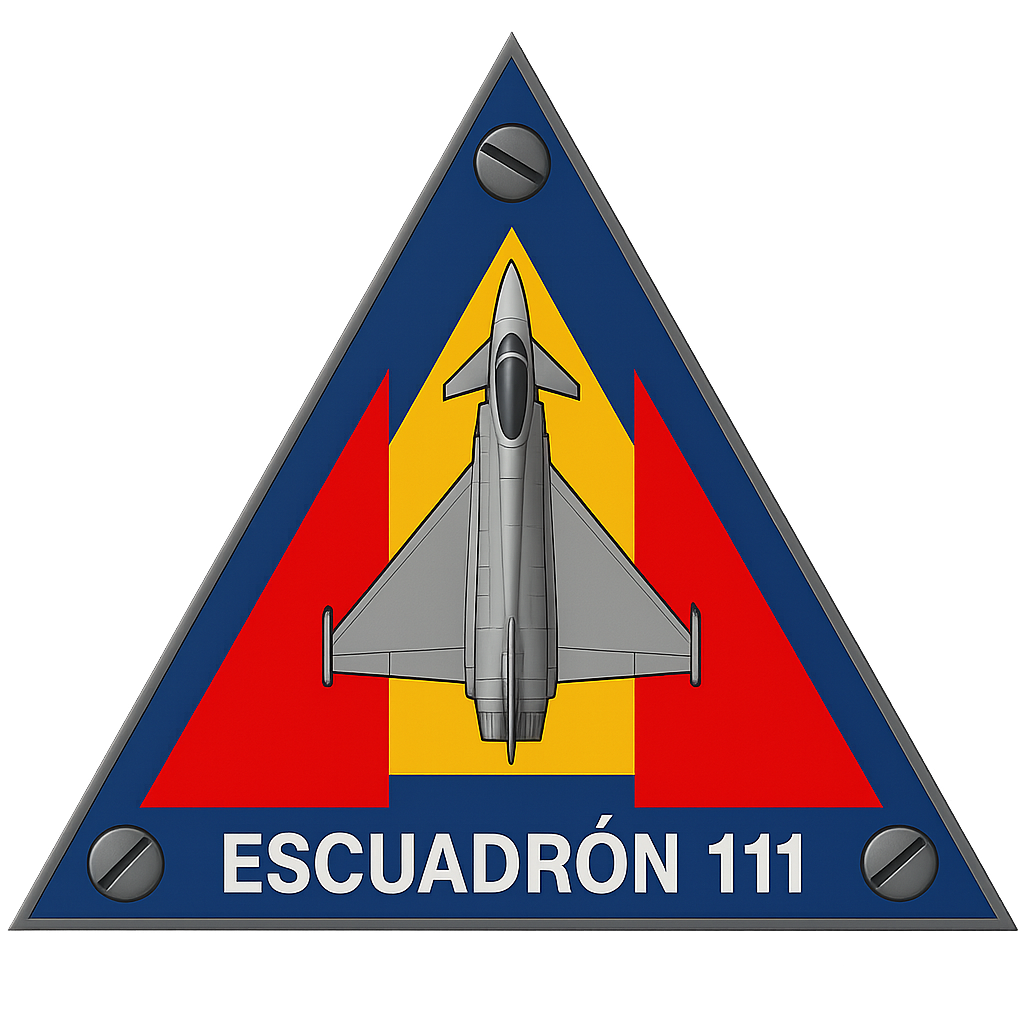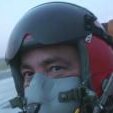Todo lo publicado por Grizzly
-
No lo conocia
Vaya tela marinera :shock: :shock: :shock: :shock: :shock: :shock: According to the USN it was a compressor exploosion that exceeded the capabilities of the engine housing to contain the shrapnel that ignited the fuel that lead to a catastrophic explosion... As you can see, TF-30 engine problems happened quite often... 159832 F-14A VF-213 NH205 29.06.1991: A/C damaged after mid-air collision with 161597 over South Chinese Sea. 159838 F-14A VF-124 NJ426 crashed 21.06.1976 near NAS Miramar after inflight engine explosion. 159839 F-14A VF-124 NJ427 crashed 23.06.1977 after an inflight engine explosion. 159840 F-14A VF-114 NH106 crashed 18.01.1984 into the sea following loss of power on single-engined approach to USS Enterprise. 159842 F-14A VF-124 NJ432 crashed 19.04.1977 near El Centro following a double engine flame-out during air combat maneuvering. 159843 F-14 VF-213 NH111 05/1981 20.07.1993: The F-14 crashed during the landing due to engine failure while coming aboard USS Abraham Lincoln while the ship was conducting routine flight operations in the Indian Ocean. Both crewman ejected, but the pilot was killed in the mishap. Six other people on the flightdeck were injured. 159846 F-14A VF-213 NH205 14.02.1986 Destroyed by engine fire during flight following in internal explosion in compressor. 159854 F-14A VF-114 NH101 crashed 28.06.1977 into Pacific Ocean some 85 miles southwest of San Diego after experiencing total power failure. 159867 F-14A VF-24 NG205 crashed 22.02.1996. While flying from USS Nimitz, the F-14A crashed in international waters during flight operations in the northern Persian Gulf. Cause engine fire resulting from engine failure. Both crew members were rescued with only minor injuries. CAG out...
-
No lo conocia
Pues en el audio se escucha a la gente decir que hay dos paracas...
-
No lo conocia
Aqui esta es la respuesta: Escrita por el controlador del Abraham Lincoln que a su vez era el Jefe de Marshalling el dia del accidente. El Marshall, para quien no lo sepa, son los puntos de espera en el espacio aéreo más o menos cercano al carrier donde deben establecerse y dirigirse los aviones a una determinada altura para iniciar el procedimiento de recuperación al barco. Causa: parada de motor a causa de un excesivo angulo de ataque por un maniobra de alta G a baja cota y bajo meteo poco recomendable. De todos modos, que una parada de motor provoque una explosión es más que raro, rarisimo... de ahi el tono medio irónico del escrito de este hombre... http://www.alexisparkinn.com/tomcat_explosion.htm Tomcat Explosion An explanation for the mysterious Tomcat explosion, quoted from another website: This is my first post on Ebaums and really I am posting to clarify a few things. 1) I am a Navy Air Traffic Controller. 2) I was stationed aboard the USS Abraham Lincoln (CVN 72) From 1994- 1999. 3) I was on Marshal Control in the Carrier Air Traffic Control Center (CATCC) when this accident happened. I’m not certain how many specifics I can get into. I do not think I can get into where we were exactly or where we were going. However, the accident report has been declassified and as such I can relay a few pertinent facts about what happened. I was tracking the Aircraft and he was traveling at a high rate of speed. He never requested to do a flyby on the John Paul Jones and since he was inside my airspace (out to 60 nautical miles) he should have made a request to do so. Fact is he never was in communications with me at all. Naval investigators concluded the loss of the airplane was due to "pilot error" because Bates failed to take the required action to prevent his plane from going into an uncontrollable spin after an engine stall. The F-14 he was flying was an F-14A and the engines on that series were prone to compressor stalls when making high angle of attack maneuvers, at high speeds, in dense atmosphere (read: Low altitude). At the time of this accident they were transitioning to the F-14B with engines that were 30% more powerful. Because of the great distance between F-14 engines, asymmetrical thrust becomes a real problem should one engine fail. Going outside of the official mishap investigation; it would appear to me that just prior to the explosion, LCDR (Lieutenant Commander) Bates place his aircraft in a very hard turn. If you look at the video, you will notice the aircraft flying at a 90-degree wing down attitude just prior to the explosion. As I stated earlier; Naval investigators concluded the loss of the airplane was due to "pilot error". Some of you may recall there was an F-14 accident in January of 1996. In this accident the pilot requested an "Unrestricted climb" and his departure took him vertical. He was observed to pass into an overcast layer of clouds at nearly a 90-degree angle of attack. Shortly after he was seen going into the clouds, his aircraft reversed direction and impacted a house. The pilot, RIO (Radar Intercept Officer) and three people on the ground were killed. The findings on this accident were also found to be "pilot error". Can you guess who the pilot of the later flight was? If you guessed LCDR John Stacy Bates you would be correct. In a period of 16 months, there were 4 losses of F14's in LCDR Bates' squadron, VF-213 the Fighting Black Lions. Two of which were attributed to him.
-
No lo conocia
Pasar un avión de Gs no creo que produzca ese efecto. Eso estaría a la orden del día en el mundo. Puede ser un FOD o cualquier otra cosa pero una sobrecarga estructural suena a coña.
-
QUE BUEN CHISTE
Me lo ha mandado un amigo... LA DIFERENCIA ENTRE POLITICO Y MILITAR Un hombre vuela en un globo, cuando de repente, se percata de que está perdido, entonces maniobra y desciende lentamente hasta divisar a un militar en medio del campo y le grita: ¿Podría usted ayudarme? He quedado en verme a las 2:00 p.m. con un amigo, llevo media hora de retraso y no sé dónde me encuentro. Claro que sí -le contesta el militar-. Se encuentra usted en un globo de aire caliente flotando a unos treinta metros de altura, entre los 40 y 43 grados de latitud norte y entre los 58 y 60 grados de longitud oeste. ¿Es usted militar, verdad? - pregunta el del globo. Sí, señor, lo soy... ¿cómo lo adivinó? Es simple, porque todo lo que ha dicho es técnicamente correcto, pero prácticamente inútil. Continúo perdido y voy a llegar tarde a mi cita porque no sé que hacer con su información. Y usted ¿es político? -pregunta el militar. Sí señor. ¿Cómo lo supo? Es muy simple. Porque usted no sabe ni donde está, ni para dónde va, ha hecho una promesa que no puede cumplir y espera que otro le resuelva el problema. De hecho, se halla exactamente en la misma situación en la que estaba antes de encontrarme, salvo que ahora, por alguna extraña razón..... ¡la culpa es mía!
-
Impacto de torpedo a un buque
Es muy conocido pero no deja de impresionarme http://es.youtube.com/watch?v=jQT6l-05UvQ
-
Parche Mono de Vuelo del Ejercito del Aire.
Lo siento esto no es un tablón de anuncios.
-
No lo conocia
http://es.youtube.com/watch?v=HLKE-Xqg0UA Impresionante de verdad. Un Tomcat explosiona en el aire en una pasada por delante de su portaaviones. ¿Alguien sabe que paso, cuando y donde? :shock: :shock: :shock:
-
eHAF E-02 Hoja de alistamiento para lo que sea y cuando sea
Pues el que se apunte que se sume el mismo a la lista dentro del post asi 1.- Grizzly 2.- Wolverine 3.- Dirty
-
eHAF E-02 Hoja de alistamiento para lo que sea y cuando sea
Quiero ver YA los nombres de los pilotos que se inscriben para el segundo engage. No hay fecha ni hora, pero será seguro un sabado como la anterior y a hora similar 21:00 o algo antes seguramente. Sin saber con quien cuento no podemos programar nada, asi que esta vez y todas las que seamos BLUE que significa mayoría de pilotos en nuestro bando porque seremos atacantes con diferentes roles, OCURRIRA SIEMPRE LO MISMO. Primero los inscritos y luego se confirmara la fecha. Recuerdo también que ya avise que si no veo interés por el tema cancelare estas actividades. NADIE VA A PONER EN RIDICULO AL 111 POR FALTA DE GANAS DE SUS PILOTOS NI POR FALTA DE CUMPLIMIENTO CON EL COMPROMISO QUE SE ADQUIERE AL ALISTARSE A ESTA ACTIVIDAD. ¿TA CLARO? INSCRIBIRSE YA AQUI PRESUPONE ESTAR LISTO CUANDO EL ALA LE NECESITE, CUALQUIER DIA (sabado) Y A LAS HORAS ESTIMADAS. QUIERO SABER CON QUIEN CUENTO PARA EMPEZAR A TRABAJAR EN FIRME. Y OS RECUERDO QUE SOLO LOS INSCRITOS A UNA MISION TIENEN DERECHO DE ACCESO A ESTE FORO. 1.- Cmte GRIZZLY (en alerta 5)
-
Otra mala noticia para los wireless users
http://www.kriptopolis.org/wpa-tocado Otra que ya ha caído :roll:
-
Capturas de pantallas-antiguas
Las gracias siempre a ti. Sobre el avión tuneado de los 50 años del ala 12 creo que quien mejores fotos tiene es Luft o Revi... a ver si te las mandan o te las enlazan. Chipi tiene alguna creo pero son algo mas lejanas si no recuerdo mal. Tambien he visto alguna en la web de fotos... joer no me sale el nombre... Te buscaremos info suficiente como para que no te dejes ni un remache si tunear jejejeej. Saludos
-
Regreso al redil, y ayuda
Cuervo no fue nunca Jefe de Escuadron, tampoco de Ala; Cuervo, Cana y yo eramos "el brazo armado" del Capitan Diablo, el mejor Jefe del Ala Falcon que ha tenido el Escuadron. El Ala Falcon debe todo lo que es a el trabajo que empezo, y de una forma que nadie lo habia hecho antes. Sigo sin recordarte, lo siento.
-
Bienvenidos al nuevo foro del Escuadrón 111 - antiguo
Como diria Jesulin... En dos palabras Bien venido Bluebird
-
Pilotos de drones (en combate)
Ummmmm Para pasar a un modulo AA o AG se debe tenr terminado el LCR, pero se puede iniciar de forma indiferente uno o los 2 modulos al mismo tiempo. ... y los jamones tambien cuentan, aunque yo no he recibido ninguno y me temo que esto ha sido el cabron del Lionair que en su dia le nombre me mano derecha para el control y supervision de mi despensa y parace que debe estar desviando "fondos reservados" para la suya... ¡Cuando menos se lo espere voy a organizar un operacion de redada y como lo pille con material sensible se va a enterar! en lugar de rugir va a cantar como las gallinas porque le voy a cortar las pelotas... :twisted:
-
Capturas de pantallas-antiguas
:shock: :shock: :shock: MI MAAAAAAAAADRE!!!!!!!!! ESTA INCREIBLE!!!! Mira que estoy "acostumbrado" a ver tus obras de arte casi en primicia, pero es que esta es la caña de España... Esta junto con la de los F-1 Tigre y el standar de los Llanos despegando es lo mas bestia que he visto tuyo tio. Felicidades otra vez por tu increible dedicacion a personalizar los skins de todo aquello huela un poco a español y militar en cualquier simulador/shooter que se precie... Me has dejao loco Juan Ramon... y ¡VIVA ESPAÑA!
-
Planificación
Aunque supongo que si estáis interesados en la aviación de combate ya lo habréis leído porque además os he recomendado mas de una vez que suscribáis a la magnifica pagina de VISTA, SUERTE Y AL TORO en http://www.maclittle.es/ aquí tenéis una entrada breve pero excelente de como empieza la planificación de una misión. http://www.maclittle.es/30/10/2008/red- ... -boss.html Desde aquí gracias una vez más a Little y Cía por su sobresaliente blog. :plas: :plas: :plas: :plas: :plas: :plas: :plas: :plas: :plas:
-
La madre de todos los troyanos
http://www.elpais.com/articulo/internet ... unet_8/Tes
-
La bestia supersonica plateada. EL HUSTLER
Bueno, es que el ejemplo que has puesto del F-104 es la caña porque ese es el famoso "widowmaker"...
-
La bestia supersonica plateada. EL HUSTLER
Muy buen comentario. Aquellos fueron realmente unos años de actividad frenetica en el diseño y la innovación. Quiza bajaron su nivel de control sobra la seguridad porque efectivamente fueron muchos accidentes y abandonos de prototipos, pero también es cierto que el desarrollo era frenetico en todas las compañias buscando mejorar su posición en el mercado de la defensa en EEUU donde además en aquellos tiempos gastaron cantidades de dinero para hacer 4 guerras de Irak en el mismo periodo de tiempo que la ultima. Las prisas no son buenas para nada y para la aviación desde luego tampoco. Las nuevas maquinas emplean mucha mas tecnología de materiales y muchisima más eléctronica, y sigue siendo en los segundo donde es mas dificil saber que cojones ocurre cuando por ejemplo 2 o 3 centralitas que por separado trabajan perfectamente se dedican a controlar los mismos parametros y sistemas de forma redundante. Es como una reunión de mujeres... - oye, que esto no lo veo bien... - pues a mi me gusta... nos lo llevamos.. - ¿que haces pero si ya hemos comprado lo que necesitabamos? esto era solo para mirarlo - ah no, no... nos llevamos los 2 y los usamos al mismo tiempo - pero como vas a usar al mismo tiempo este secador de pelo con la bañera hidromasaje... - ¿y por que no? - oye guapa que yo entiendo mucho de secadores y de corriente electrica - oye guapita y yo soy diseñadora de hidromasajes y te digo que el agua se lleva mal con la corriente - ah si? pues ya me contaras para que sirve un secador si es para usarlo con el pelo mojado... - pues cuando uses el puto secador cortare la corriente en casa - pues te vas a joder porque voy a comprar un grupo electrogeno para tener siempre tensión, y veras como cuando te estes bañando yo mientras te seco el pelo y tan agustito te vas a quedar.
-
Carrier
Esta muy chula esta web Es un barco (¿o una ciudad?) impresionante. http://www.pbs.org/weta/carrier/
-
Burradas aeronauticas
Merece la pena leerlo http://burradasaeronauticas.blogspot.com/ Mi papa pilota un F-18 (y en realidad es un harrier) Autor: El Ministerio de Defensa. Con dos cojones y un palito http://www.microsiervos.com/archivo/aer ... azapo.html
-
Fotos de aviones????
¡Que vaaaaa! Aqui como mucho vais a encontrar 4 o 5... http://flickr.com/groups/481553@N21/pool/
-
Pilotos de drones (en combate)
Cuanto menos, curioso. Para los que no entienden el ingles, se resume en que los pilotos de los aviones drones como el Predator, que se vuelan desde el comodo asiento de un puesto de control en tierra tambien sufren el stress de la guerra. Pues imaginemonos entonces al de un caza o al de un helicoptero que ha de volar todos los dias en zonas de combate o donde se supone que encima no hay un verdadero conflicto, y estan expuestos a los disparos de mampads que los esperan emboscados. Algo parecido a los de infanteria. Supongo que habeis visto videos de los snipers iraquies que graban sus ataques a los soldados americanos que se patrullan por las ciudades en sus convoys o sus tanques o mientras estan a pie dandoles unos caramelos a los niños... Eso si que tiene que ser estresante ¡No me jodas! Predator Pilots Suffering War Stress August 08, 2008 Associated Press MARCH AIR RESERVE BASE, Calif. - The Air National Guardsmen who operate Predator drones over Iraq via remote control, launching deadly missile attacks from the safety of Southern California 7,000 miles away, are suffering some of the same psychological stresses as their comrades on the battlefield. Working in air-conditioned trailers, Predator pilots observe the field of battle through a bank of video screens and kill enemy fighters with a few computer keystrokes. Then, after their shifts are over, they get to drive home and sleep in their own beds. But that whiplash transition is taking a toll on some of them mentally, and so is the way the unmanned aircraft's cameras enable them to see people getting killed in high-resolution detail, some officers say. In a fighter jet, "when you come in at 500-600 mph, drop a 500-pound bomb and then fly away, you don't see what happens," said Col. Albert K. Aimar, who is commander of the 163rd Reconnaissance Wing here and has a bachelor's degree in psychology. But when a Predator fires a missile, "you watch it all the way to impact, and I mean it's very vivid, it's right there and personal. So it does stay in people's minds for a long time." He said the stresses are "causing some family issues, some relationship issues." He and other Predator officers would not elaborate. But the 163rd has called in a full-time chaplain and enlisted the services of psychologists and psychiatrists to help ease the mental strain on these remote-control warriors, Aimar said. Similarly, chaplains have been brought in at Predator bases in Texas, Arizona and Nevada. In interviews with five of the dozens of pilots and sensor operators at the various bases, none said they had been particularly troubled by their mission, but they acknowledged it comes with unique challenges, and sometimes makes for a strange existence. "It's bizarre, I guess," said Lt. Col. Michael Lenahan, a Predator pilot and operations director for the 196th Reconnaissance Squadron here. "It is quite different, going from potentially shooting a missile, then going to your kid's soccer game." Among the stresses cited by the operators and their commanders: the exhaustion that comes with the shift work of this 24-7 assignment; the classified nature of the job that demands silence at the breakfast table; and the images transmitted via video. A Predator's cameras are powerful enough to allow an operator to distinguish between a man and a woman, and between different weapons on the ground. While the resolution is generally not high enough to make out faces, it is sharp, commanders say. Often, the military also directs Predators to linger over a target after an attack so that the damage can be assessed. "You do stick around and see the aftermath of what you did, and that does personalize the fight," said Col. Chris Chambliss, commander of the active-duty 432nd Wing at Creech Air Force Base, Nev. "You have a pretty good optical picture of the individuals on the ground. The images can be pretty graphic, pretty vivid, and those are the things we try to offset. We know that some folks have, in some cases, problems." Chambliss said his experience flying F-16 fighter jets on bombing runs in Iraq during the 1990s prepared him for his current job as a Predator pilot. But Chambliss and several other wing leaders said they were concerned about the sensor operators, who sit next to pilots in the ground control station. Often, the sensor operators are on their first assignment and just 18 or 19 years old, officers said. While the pilot actually fires the missile, the sensor operator uses laser instruments to guide it all the way to its target. On four or five occasions, sensor operators have sought out a chaplain or supervisor after an attack, Chambliss said. He emphasized that the number of such cases is very small compared to the number of people involved in Predator operations. Col. Rodney Horn, vice commander of the 147th Reconnaissance Wing at Ellington Field Joint Reserve Base near Houston, said his unit went out of it way to impress upon sensor operators the sometimes lethal nature of the job. "No one's walking into it blind," he said. Master Sgt. Keith LeQuire, a 48-year-old sensor operator here, said the 163rd asks prospective sensor operators whether they are prepared for the deadly serious mission. "No one's been naive enough to come in to interview but not know about that aspect of the job," he said. Unlike Soldiers living together in the war zone, the Predator operators do not have the close locker-room-style camaraderie that allows buddies to talk about the day's events and blow off steam. But many Predator operators at Creech employ a decompression ritual during the long ride home, said Air Force Lt. Col. Robert P. Herz. "They're putting a missile down somebody's chimney and taking out bad guys, and the next thing they're taking their wife out to dinner, their kids to school," said Herz, a Ph.D. who interviewed pilots and sensor operators for a doctoral dissertation on human error in Predator accidents. "A lot of them have told me, `I'm glad I've got the hour drive.' It gives them that whole amount of time to leave it behind," Herz said. "They get in their bus or car and they go into a zone - they say, `For the next hour I'm decompressing, I'm getting re-engaged into what it's like to be a civilian.'" Col. Gregg Davies, commander of the 214th Reconnaissance Group in Tucson, Ariz., said he knows of no member of his team who has experienced any trauma from launching a Predator attack. Himself a Predator pilot, Davies said he has found the work rewarding. The Arizona Air National Guard unit flies Predators in both the Iraq and Afghanistan war zones. It has often provided protection for American convoys, and its personnel have seen insurgents planting roadside bombs. "If we can have an effect there where we can take people out, that's a real plus in terms of saving American lives," Davies said. "Our folks look at it as they're in the fight, they're saving lives. They don't feel too bad about that."
-
La bestia supersonica plateada. EL HUSTLER
Me encanta este pajaro. Es (era) una animalada de bombardero de la guerra fria. http://shock.military.com/Shock/videos. ... irforce.nl




